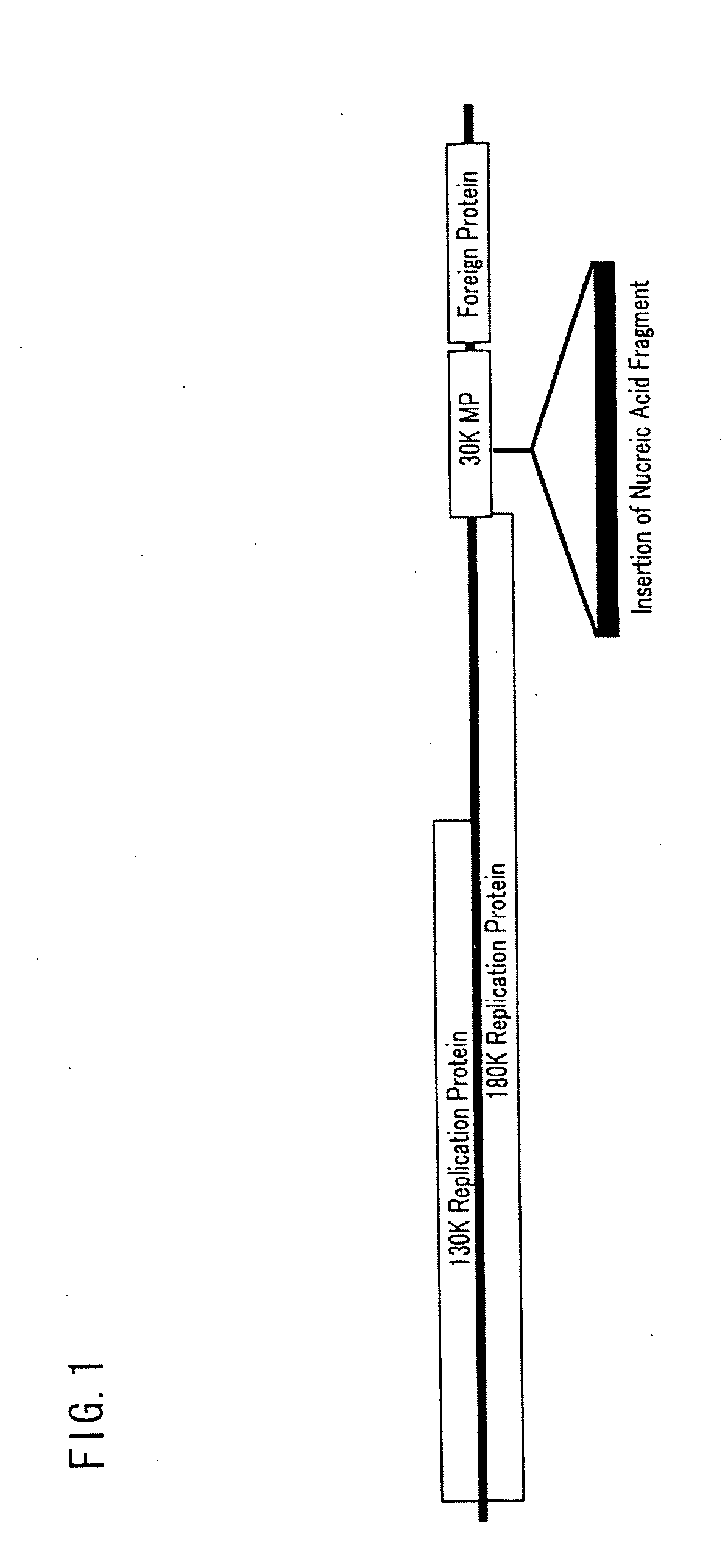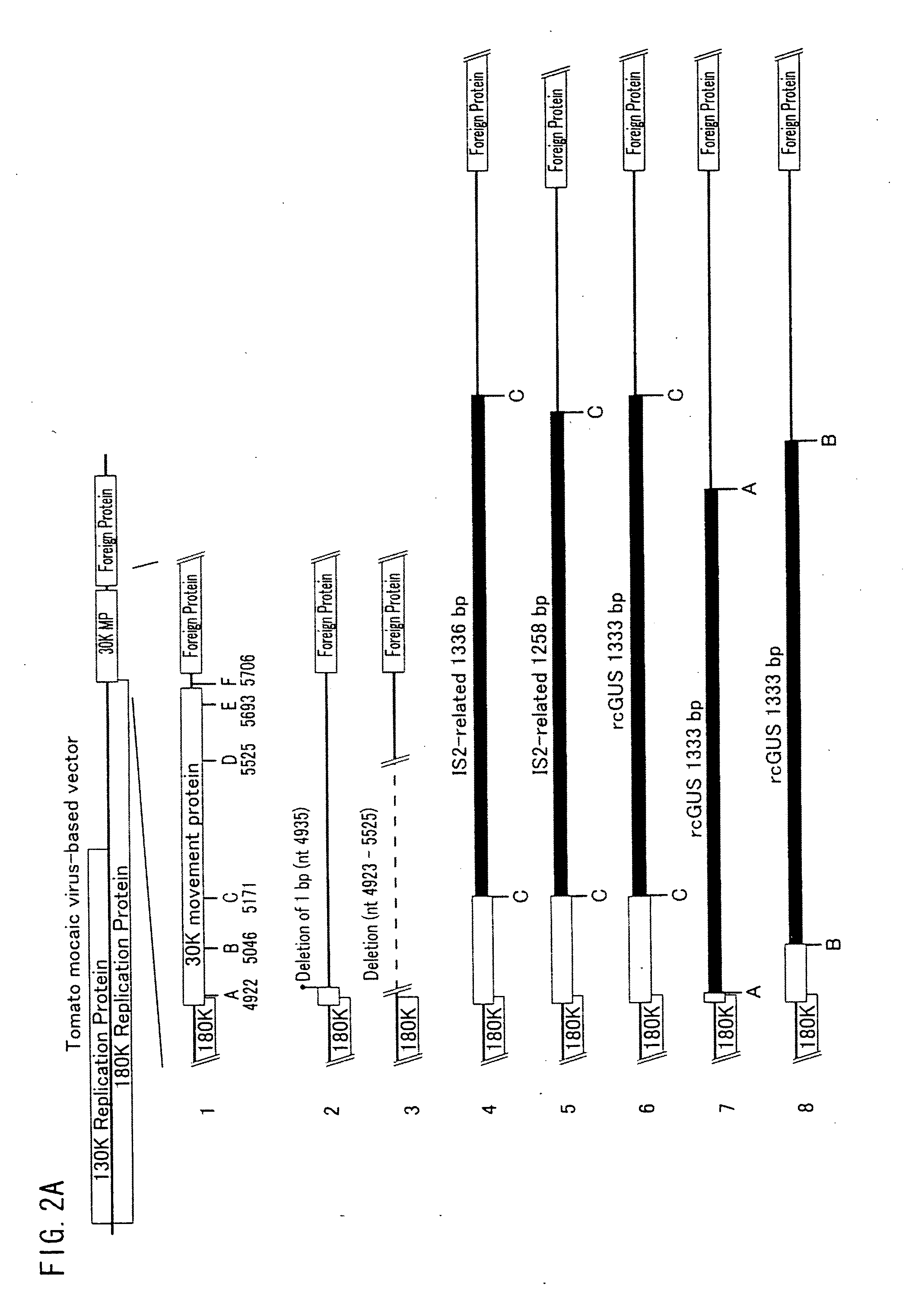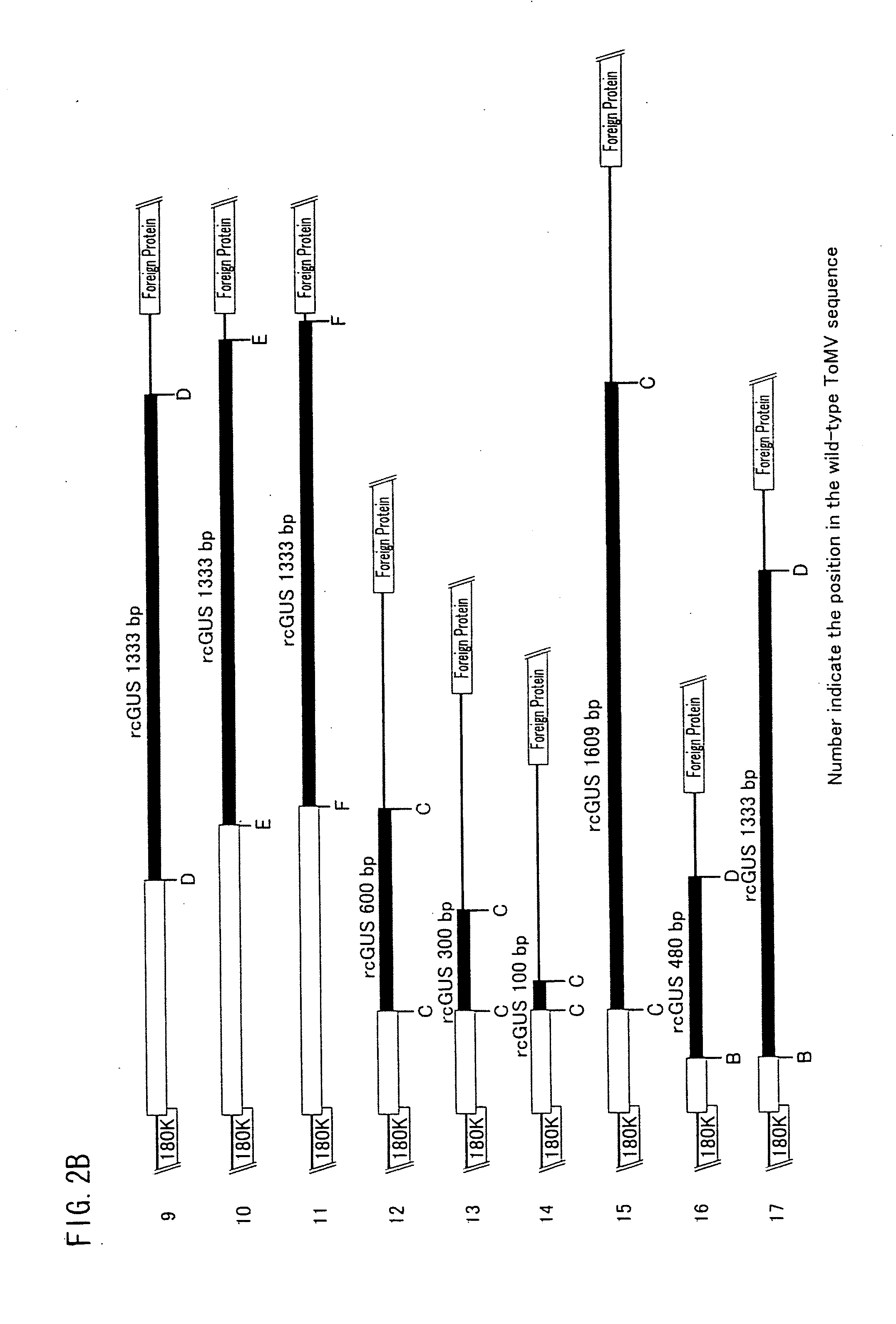Virus vector and use thereof
a virus and vector technology, applied in the field of protein production, can solve the problems of reduced vector yield, reduced and complete inhibition of host cell growth, so as to reduce the growth rate of virus contained, suppress the expression of virus proteins, and improve the growth rate of host cells.
- Summary
- Abstract
- Description
- Claims
- Application Information
AI Technical Summary
Benefits of technology
Problems solved by technology
Method used
Image
Examples
example 1
Construction of Plasmid for Producing GFP
[0126]cDNAs of a tomato mosaic virus were synthesized by inserting various base sequences (SEQ ID NO: 21 through 34) into a base sequence (SEQ ID NO: 20) of a gene encoding a movement protein. The base sequence is located between a base sequence of a gene encoding a tomato mosaic virus replication protein and a base sequence of a gene encoding a target foreign protein. The cDNAs thus synthesized were used to construct plasmid constructs, respectively (see FIG. 1),
[0127]FIGS. 2A and 2B show positions of respective insertion base sequences with which the base sequence of the gene encoding the movement protein was modified by insertion, substitution, or addition. In FIGS. 2A and 2B, A through F indicate respective positions where the respective insertion base sequences were inserted, and numbers below the alphabets indicate respective positions of the respective insertion base sequences in a native sequence of the tomato mosaic virus. Note that...
example 2
Improvement in Growth Condition of Host Microorganism Cell
[0132]The plasmid constructs constructed in the Example 1 were used to transform Escherichia coli JM109 (TOYOBO). The Escherichia coli JM109 thus transformed was placed on an LB agar medium containing 100 μg / ml carbenicillin and was incubated at 37° C. for 18 hours. Five colonies whose growth was not affected by other colonies were randomly selected from obtained colonies, and each of the five colonies was measured in major axis.
[0133]A colony having a plasmid construct containing an insertion sequence and a colony having a plasmid construct containing no insertion sequence among the plasmid constructs constructed in the Example 1 were compared in major axis. Table 1 and FIG. 3 show obtained relative values of the major axis.
TABLE 3Major AxisPlasmid Name(relative value)1piLerG3SRz1.03piLΔMPerG3SRz0.914piLIS2erG3SRz1.848piLrcG3erG3SRz1.7012piLrcG4erG3SRz1.5313piLrcG5erG3SRz1.4614piLrcG6erG3SRz1.1815piLrcG7.5erG3SRz1.8916piLrc...
example 3
Construction of Plasmid for Production of Foreign Protein
[0135]In the Example 3, plasmid constructs were constructed by using a human gamma interferon (hIFNγ) gene as a gene encoding a foreign protein.
[0136]The hIFNγ gene was amplified by the PCR method by using an AatII recognition site at the 5′-terminal side and a BstEII site at the 3′-terminal side of a GFP gene of each of the plasmid constructs constructed in the Example 1 (No. 1 (piLerG3SRz), No. 3 (piLΔMPerG3SRz), No. 4 (piLIS2erG3SRz), No. 6 (piLrcG1erG3SRz), and No. 8 (piLrcG3erG3SRz) (see Table 1)). The hIFNγ gene was then accurately substituted, so that plasmid constructs (No. 1′ (piLhIFNγSRz), No. 3′ (piLΔMPhIFNγSRz), No. 4′ (piLIS2hIFNγSRz), No. 6′ (piLrG1hIFNγSRz), and No. 8′ (piLrG3hIFNγSRz)) were constructed.
[0137]Yields of the plasmid constructs in respective cells was quantitatively analyzed in the same manner as in the Example 1. The result demonstrated that a yield of a plasmid construct into which an insertion ...
PUM
| Property | Measurement | Unit |
|---|---|---|
| base length | aaaaa | aaaaa |
| structure | aaaaa | aaaaa |
| structures | aaaaa | aaaaa |
Abstract
Description
Claims
Application Information
 Login to View More
Login to View More - R&D
- Intellectual Property
- Life Sciences
- Materials
- Tech Scout
- Unparalleled Data Quality
- Higher Quality Content
- 60% Fewer Hallucinations
Browse by: Latest US Patents, China's latest patents, Technical Efficacy Thesaurus, Application Domain, Technology Topic, Popular Technical Reports.
© 2025 PatSnap. All rights reserved.Legal|Privacy policy|Modern Slavery Act Transparency Statement|Sitemap|About US| Contact US: help@patsnap.com



